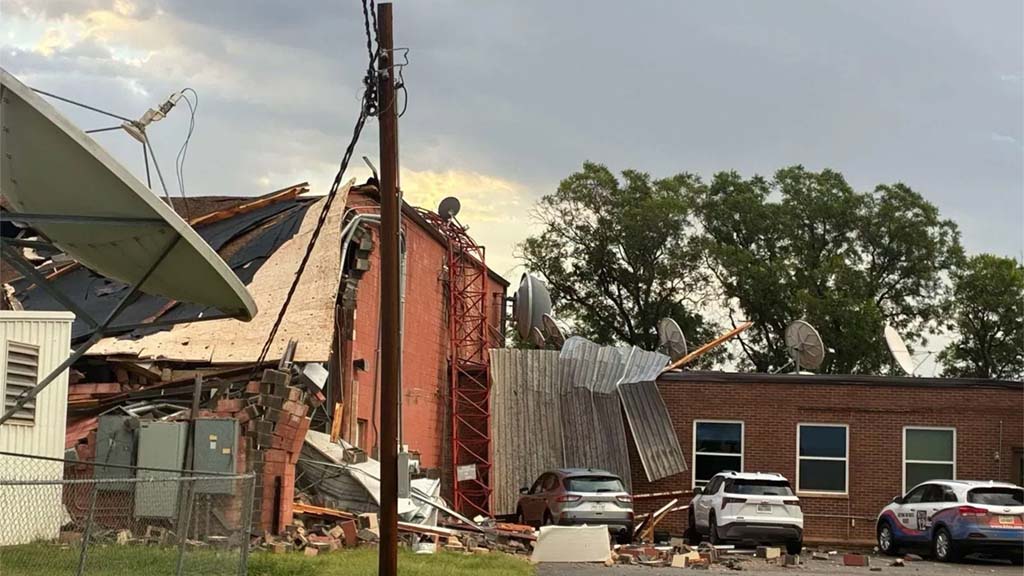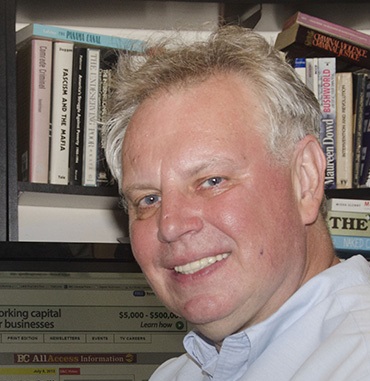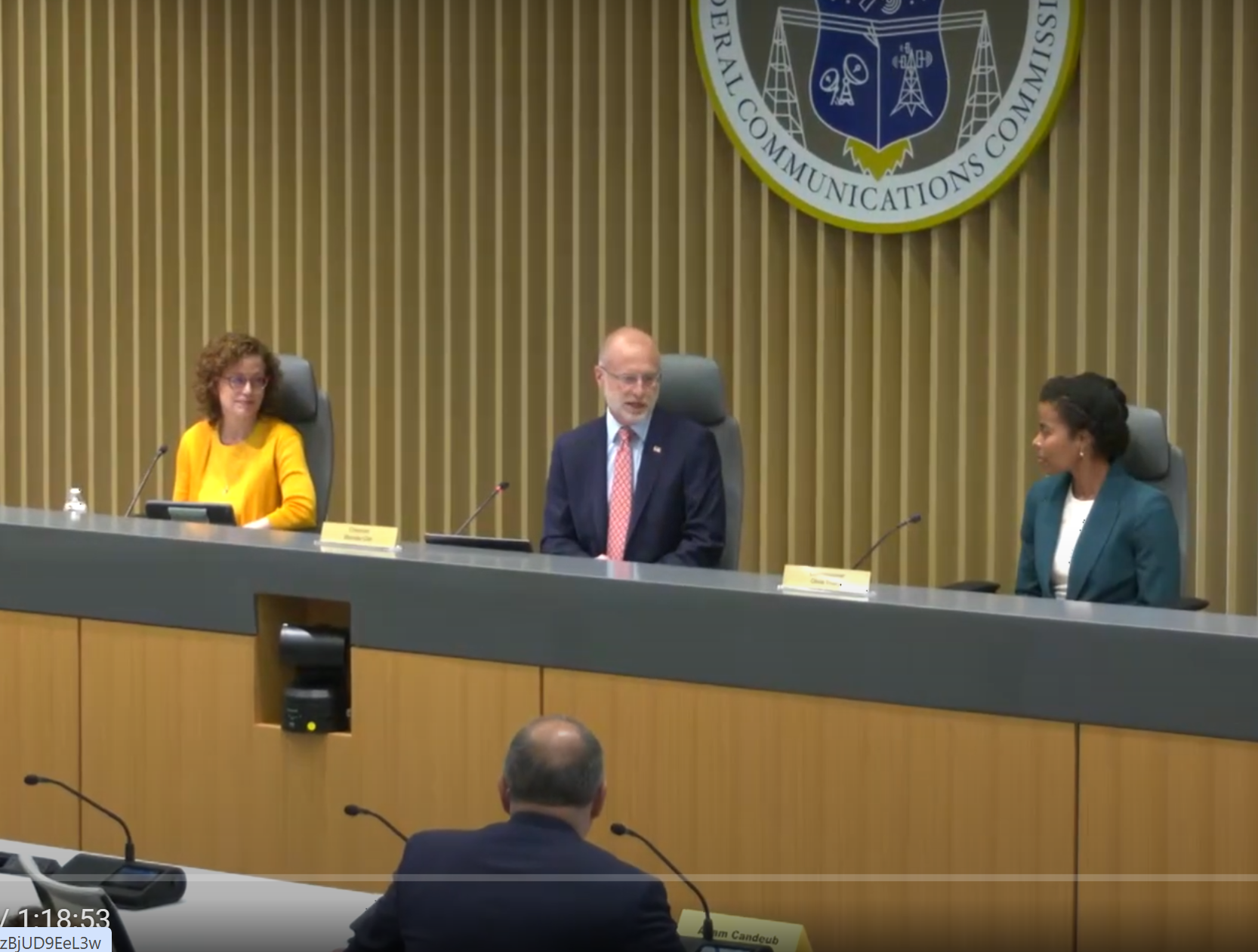Cloud-Based Workflow Speeds KTXS’s Recovery From Downed Tower, Storm Damage
Newly deployed cloud-based master control helped Sinclair’s Abilene, Texas station get back on the air in days rather than weeks

ABILENE, Texas—Following a severe June 8 storm that knocked down a tower onto the Sinclair-owned KTXS building, the initial scene at the site was devastating. The collapsed roof had destroyed the ABC affiliate's studio, wrecking a lot of equipment and making it impossible to produce newscasts.
Luckily, no one was injured in the disaster, and the station’s news operation was able to quickly recover thanks to a recently deployed cloud-based master control system that allowed Sinclair’s corporate, regional and local engineers to rapidly restore programming.
David Ostmo, a San Antonio-based senior regional engineering director at Sinclair, said he arrived in Abilene midday on Monday (June 9) with two engineers from the company’s San Antonio stations to help two engineers at KTXS survey and restore the damage.
By Monday evening Sinclair’s local, regional and corporate engineers had restored the station’s feed to cable; by Wednesday evening, less than three days after the wind storm knocked down the tower and ripped the roof off the KTXS building as its meteorologists watched in horror, the ABC affiliate was once again offering over-the-air broadcasts.
“Despite all the devastation, we were able to recover quickly, because we are a cloud based master control that is hubbed out of market,” Ostmo said. “We just made that transition about two months ago. If this had occurred earlier this year, we would have been off the air for a very long period of time because we would have had to spin up another master control from scratch.”
Sinclair has set up regional hubs for different network affiliates and is currently hubbing all of its ABC affiliates like KTXS out of Chattanooga, Tennessee. It is using Amazon Web Services for a cloud-based master control system.
“Our station [KTXS] is hubbed up from Chattanooga,” Ostmo said. “The Chattanooga hub was able to fiber over [a feed] to our station in Amarillo, and our Amarillo station then handed the signal off to the local cable provider, which returned our signal back to the air on Monday evening.”
The professional video industry's #1 source for news, trends and product and tech information. Sign up below.
This operational structure also helped quickly restore the over-the-air broadcasts.
The KTXS transmitter, which is about 25 miles from the station’s studio and building, was not damaged in the storm.
“We brought in a satellite truck from San Antonio and parked it at the transmitter site, which was a whole challenge in and of itself, because it's up on top of a fairly tall mesa. It’s a very rough road to get to the transmitter site,“ Ostmo said. “Fortunately, our truck was able to navigate the twists and turns and hairpin curves and make its way up to the top so that we could get it set up.”
Engineers they used the “satellite truck parked at our transmitter site to downlink the signal,” he continued. “Our hubbed signal is being uplinked at our corporate headquarters and then downlinked at the transmitter site [by the satellite truck]...where we are handing it off to the transmitter. Fortunately, the ATSC encoders at the station were not wet, and we were able to move them out to the transmitter side to encode the signal coming from the satellite and feed it to the transmitter.”
Newer workflows and some local help have also helped restore the station’s news coverage and operations.
Following the storm damage, nearby Abilene Christian University kindly let the station set up its news operations temporarily at its facilities.
KTXS also uses an anchorless news format, which makes it easier for reporters to put together stories and package them into a newscast.
"The newscast is done through Amagi automation,” he said. “So the reporters create their packages and essentially insert them into an Amagi playlist. [Initially] San Antonio was just feeding a newscast to the Chattanooga hub, and the Chattanooga hub inserted it into the program stream. After we reestablished our newsroom there [at Abilene Christian University], they continued using the Amagi workflow to put packages together.”
The station can continue to operate out of the university until early August, when students return. Sinclair is currently analyzing the pros and cons of rebuilding at the same site or moving to a new location.
Newer cloud-based workflows will also play an important role in that decision. “As long as we can access the cloud, we're golden,” Ostmo said. “We can set that up in any number of places. All we needed was some tables and internet access and we can get to work.
“It's kind of mind-boggling to think that we don't have to build out a great, big, huge studio to get up and running again,” he added. “We will have a studio at our new facility, but it's not going to have the same intensive requirements we once might have needed.”
George Winslow is the senior content producer for TV Tech. He has written about the television, media and technology industries for nearly 30 years for such publications as Broadcasting & Cable, Multichannel News and TV Tech. Over the years, he has edited a number of magazines, including Multichannel News International and World Screen, and moderated panels at such major industry events as NAB and MIP TV. He has published two books and dozens of encyclopedia articles on such subjects as the media, New York City history and economics.

